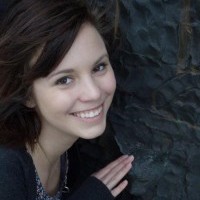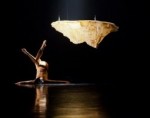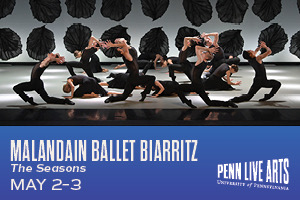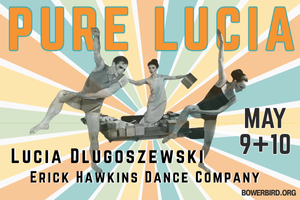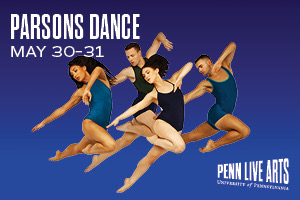
Passion Ignites “Kariamu and Company”
by Kristen Gillette
Raahmonaaah Revisited-- one the most moving pieces of Kariamu and Company’s showcase “Same Mother, Different Father”--begins with a poem performed by Stafford C. Berry Jr."Ramonaaaa annaa bo banna anna fe fi fo fanna," he cries.. During the 1985 MOVE bombing, police dropped a bomb on the house where the Philadelphia-based black liberation group were living in West Philadelphia. Only Ramona Africa and 11-year-old “Birdie” survived.
Dancers representing those killed cross the stage in a mesmerizing rhythmic march. Never had something so simple been so beautiful, so powerful to me.
Step right.
Step left.
Snap.
The sound resonates, in unison, as each dancer snaps their right foot in sharply to their left ankle. The piece ends as Ramona (Adrienne Abdus-Salaam) rises from the ashes. She starts off shy, barely thrusting her hips, rolling her shoulders. Her expression intensifies with every thrust, every roll. It's almost as if she's smiling. She shifts her hips with confidence.
She's survived.
Dr. Kariamu Welsh, the main choreographer of the evening, developed Umfundalai technique over 40 years ago. Umfundalai, which means “essence” or “essential” in Kiswahili, incorporates steps, rhythm and sensibility from a range of African dance traditions and is designed to welcome both trained and untrained dancers. This is evident in the simple, rhythmic march in Raahmonaaah Revisted as well as through Ramona’s passion-filled hip thrusts and shoulder rolls. While most of the pieces this evening feature Umfundalai technique, contemporary and hip hop moves are also incorporated into the various works. Although the 14 dancers who perform are of various technical skill levels, they all have a passion and love that comes through in the energy they display on stage.
Another piece in the showcase, Suits (choreographed by C. Kemal Nance) begins with “Not While I’m Around” from Sweeney Todd. While the lyrics seemingly fit the sultry mood, the live a capella performance is off-key and the switch to hip-hop music is jarring.
One dancer enters, a suit jacket on but with tattered, quilted shorts. A beggar. He approaches two men conversing, but they shrug. The beggar tries someone else. At last, the dancer in back, in a well-fitted suit, takes him literally under his wing and embraces him. The beggar trembles and seizes, shaking violently, as if meeting his savior.
Some moments later, the piece breaks out into a “cypher,”or hip hop jam session. A dancer hidden among the audience dashes down the bleachers, grinning and crying to the other dancers and instantly joining the performance.
As the evening’s title work, Welsh’s Same Mother, Different Father, begins, generic sounding cool smooth jazz music fills the theater. Throughout the dance, the performers return to huddles, shivering, needing each other for help. Sometimes it’s offered, at other times the dancers are left out in the cold. The costumes, rain jackets with hoods, fit the dark, rainy mood but are awkward to maneuver.
A video loop plays behind the dancers. Black and White. A man’s face appears. But then… colorful spheres pour against black and white concrete. They look like candy and I’m confused as to why this is included as part of the videography. I get distracted, trying to spot an "S" on one of them, trying to assure myself that they are in fact skittles pouring onto the screen.
After the final piece of the evening, Taking Flight, ends, a parade of dancers sweeps back onstage, taking their bows. They form a semi-circle which grows as they are joined by performers from the show’s other works. All take turns dancing in the center. Performers then storm up to the audience, grabbing their friends, dragging some, unwilling, to the stage. Everyone is welcome on the dance floor, just as Welsh’s dance technique is accepting of all. Some stand idly speaking to their friends while others are swept up by the energy and fun that came from the bows, dancing with the same enthusiasm and congratulating the performers on a job well done.
Same Father, Different Mother, Kariamu and Company, Conwell Dance Theater, Temple University, February 2-3 2013.
By Kristen Gillette
February 14, 2013

